Stock market today: S&P 500 rides Apple-led tech rally to close higher
Introduction & Market Context
WhiteHorse Finance , Inc. (NASDAQ:WHF) released its first quarter 2025 earnings presentation on May 13, revealing a challenging quarter marked by declining income and deteriorating portfolio quality. The business development company, which focuses on originating senior secured loans to lower middle market companies, reported a significant drop in net investment income and a concerning rise in non-accrual investments.
The company’s stock closed at $9.28 on May 13, down 0.54% for the day, and continues to trade at a substantial discount to its net asset value of $12.11 per share. WhiteHorse Finance maintains a high dividend yield of 16.5% based on its current share price and quarterly distribution of $0.385 per share.
Quarterly Performance Highlights
WhiteHorse Finance reported net investment income (NII) of $6.8 million, or $0.294 per share, for the first quarter of 2025. This represents a significant decline from $10.8 million, or $0.47 per share, in the same quarter last year. Total (EPA:TTEF) investment income also decreased substantially, falling from $25.5 million in Q1 2024 to $18.8 million in Q1 2025.
As shown in the following comprehensive quarterly financial table:
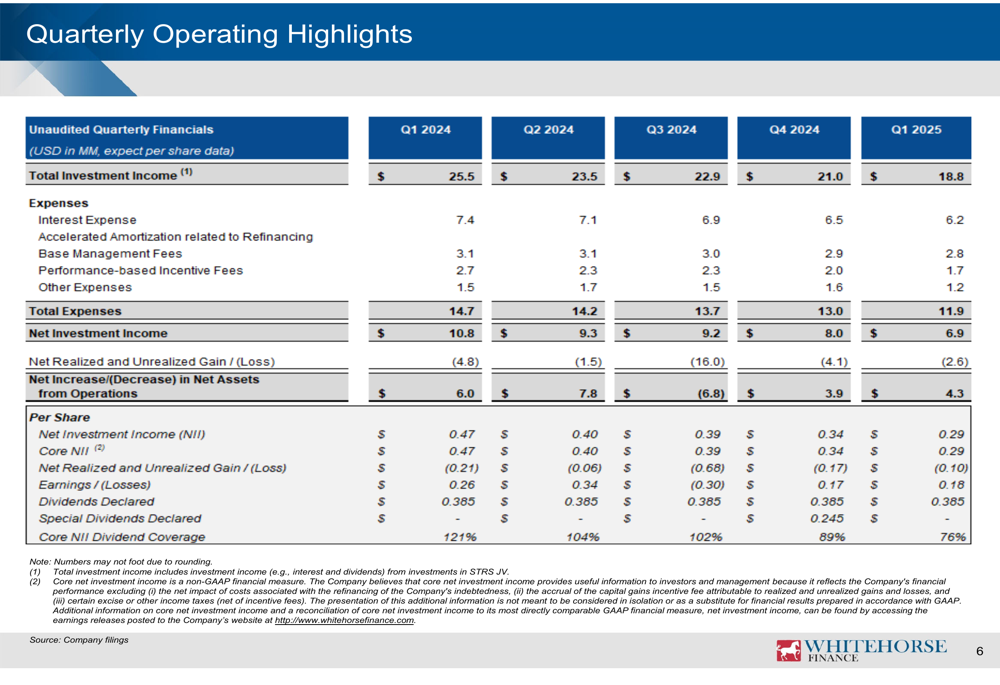
The company’s core NII dividend coverage ratio fell to 76% in Q1 2025, down from 121% in Q1 2024, indicating that current earnings are no longer sufficient to cover the quarterly dividend of $0.385 per share. Despite this concerning trend, WhiteHorse maintained its dividend payment, which was distributed on April 4, 2025.
During the quarter, WhiteHorse made gross investment deployments of $40.8 million across seven new portfolio companies while experiencing dispositions and principal repayments of $19.4 million. The weighted average effective yield on income-producing investments stood at approximately 12.1% at quarter-end.
Portfolio Quality and Composition
Perhaps the most concerning development in the quarter was the significant increase in non-accrual investments. As of March 31, 2025, 7.6% of the portfolio’s fair value was on non-accrual status, a dramatic increase from just 1.1% a year ago. This deterioration in portfolio quality is clearly illustrated in the following chart:
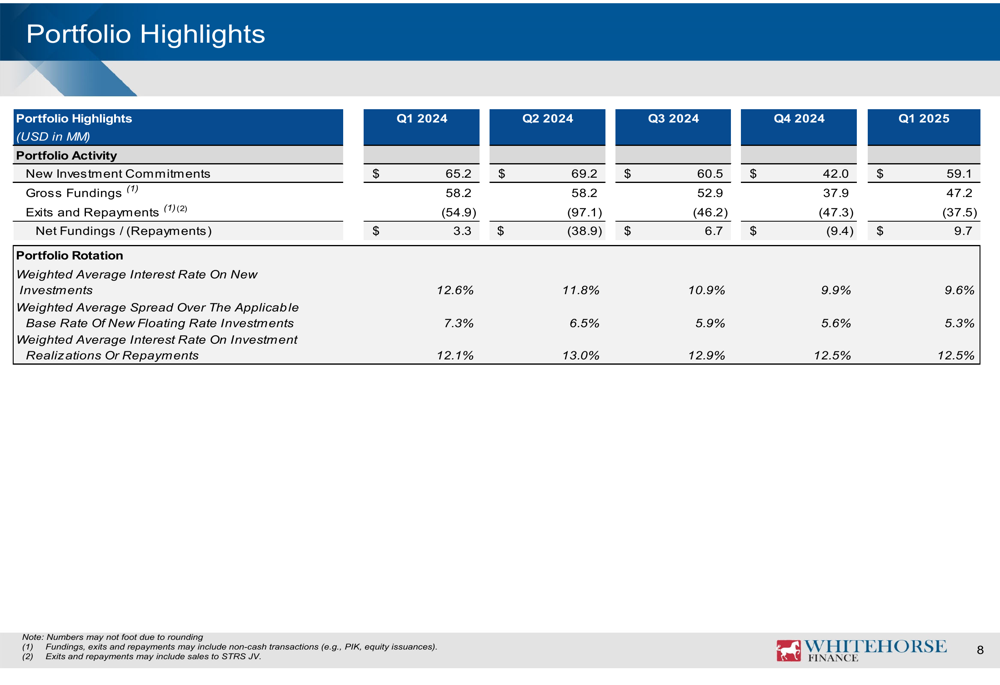
The company disclosed that investments in MSI Information Services (NASDAQ:III), Inc. were placed on non-accrual status during Q1 2025, contributing to this increase. The portfolio’s overall composition remained heavily weighted toward senior secured loans, with approximately 99.8% of the portfolio consisting of secured debt.
WhiteHorse Finance’s investment portfolio totaled $651.0 million as of March 31, 2025, spread across 134 positions in 74 portfolio companies. The portfolio remains diversified across various industries, with Air Freight & Logistics representing the largest sector at 47.5% of fair value.

Dividend and NAV Analysis
WhiteHorse Finance’s net asset value (NAV) per share declined to $12.11 as of March 31, 2025, down from $12.31 at the end of the previous quarter. The following NAV bridge provides a clear breakdown of the factors contributing to this decrease:
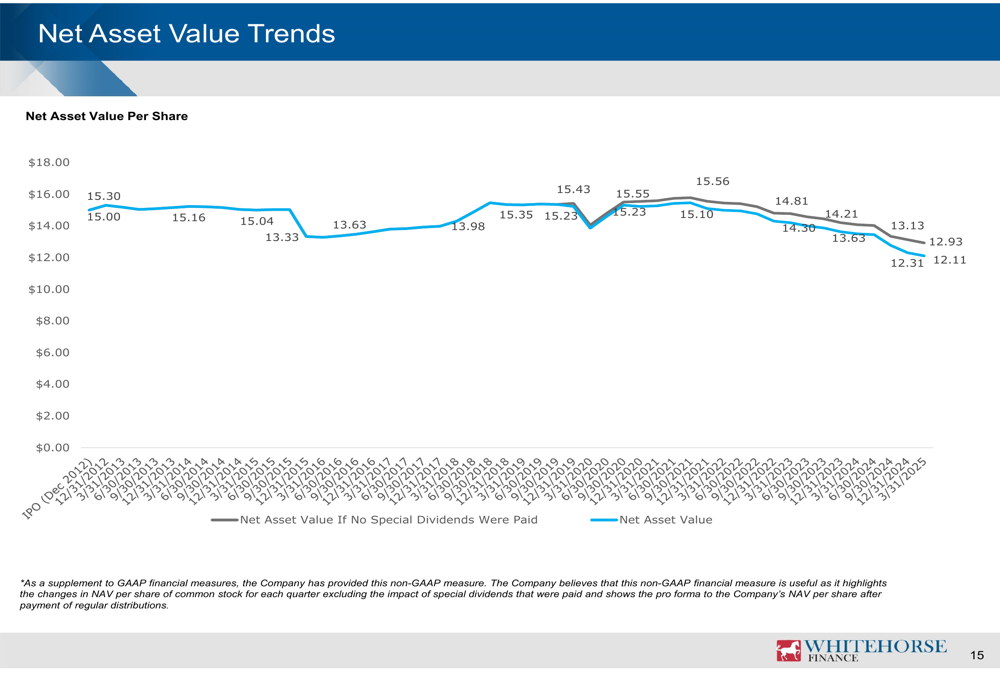
While core net investment income contributed positively ($0.294 per share), this was more than offset by the quarterly distribution ($0.385 per share) and net realized and unrealized losses ($0.11 per share combined). The company’s NAV has shown a concerning downward trend over time, as illustrated in its historical NAV chart.
The dividend yield remains high at 16.5% based on the May 12, 2025 share price of $9.33, but the sustainability of this dividend is increasingly questionable given the declining dividend coverage ratio. WhiteHorse has maintained quarterly dividends at or above $0.355 per share since its 2012 IPO, but the current payout appears to be outpacing earnings.
Leverage and Funding Profile
WhiteHorse Finance’s gross leverage increased during the quarter to 1.30x, approaching the upper end of its target range of 1.00x-1.35x. The increase was primarily driven by $8.6 million in net borrowings to fund new investments, combined with a $4.7 million decrease in NAV due to net realized and unrealized losses.
The following chart illustrates the company’s leverage trend:
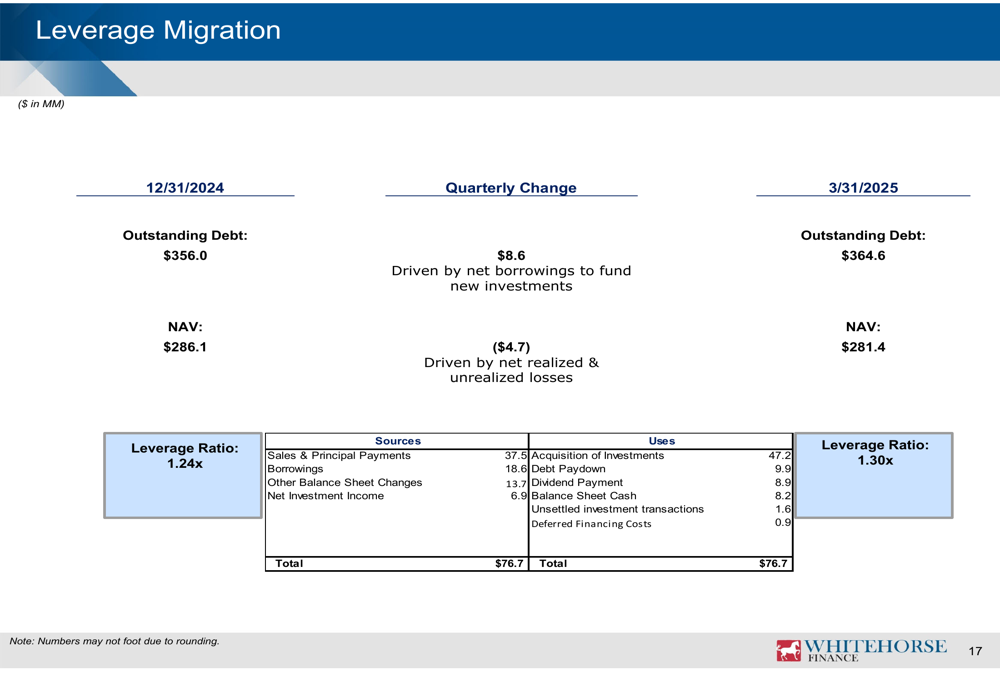
The company’s joint venture with STRS Ohio (STRS JV) had total assets of $323.5 million as of March 31, 2025. This partnership continues to be an important component of WhiteHorse’s investment strategy, representing 16.4% of the overall portfolio by fair value.
Forward-Looking Statements
Despite the challenging quarter, WhiteHorse Finance continues to emphasize its differentiated origination platform, with 25 dedicated direct lending originators across 13 North American offices. The company maintains that its rigorous credit process and investment committee structure position it well to navigate the current market environment.
The effective yield trend, however, suggests ongoing pressure on income generation, as shown in the following chart:
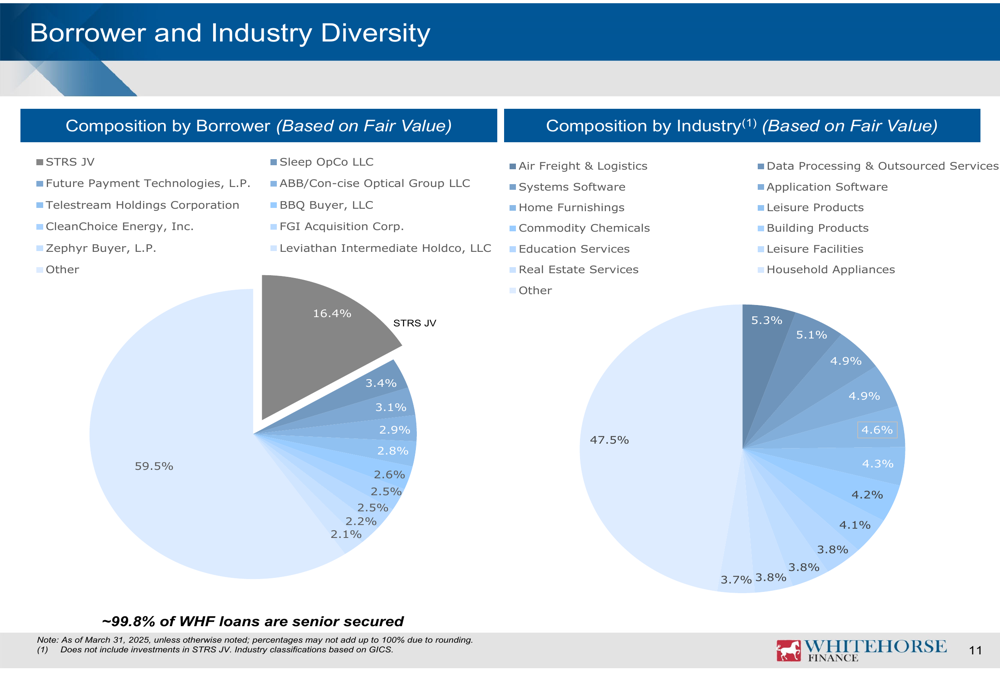
Looking ahead, WhiteHorse faces significant challenges in improving its portfolio quality and increasing its net investment income to sustainable levels that can support the current dividend. The rising percentage of non-accrual investments will likely continue to pressure earnings in the near term, potentially forcing management to reconsider its dividend policy if performance does not improve in coming quarters.
Full presentation:
This article was generated with the support of AI and reviewed by an editor. For more information see our T&C.
